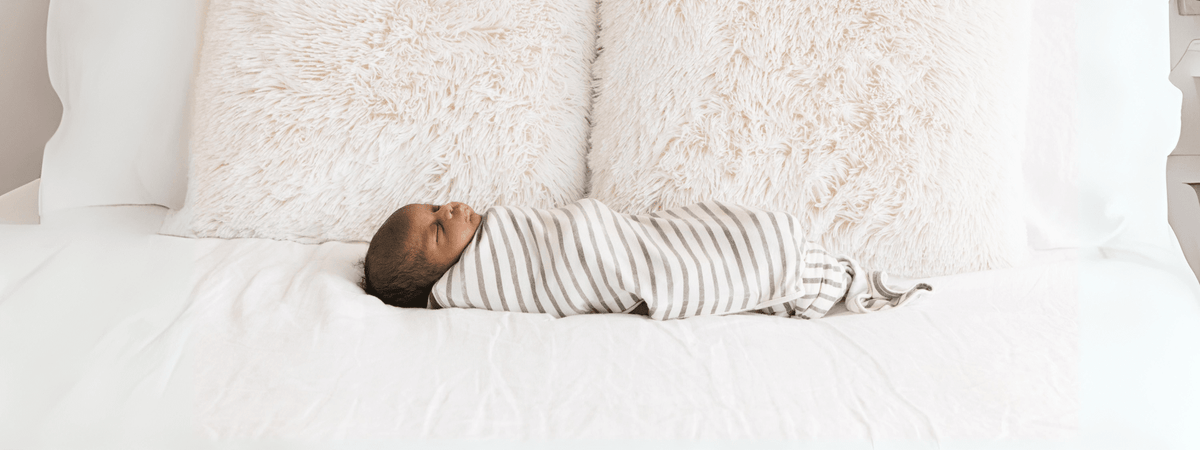

As a new parent, you may be fascinated by the tiny movements and reflexes your newborn displays right from birth. These reflexes are natural, involuntary responses that help your baby navigate the world and ensure their safety in the early days of life. Newborn reflexes are a sign of healthy brain and nervous system development, and they serve essential roles in your baby's survival and early motor skill development.
Let’s explore some of the most common newborn reflexes, what they mean, and how they contribute to your baby’s overall development.
1. Moro Reflex (Startle Reflex)
The Moro reflex, or startle reflex, is one of the most well-known newborn reflexes. When your baby experiences a sudden movement, loud sound, or feels as though they're falling, they will respond by throwing their arms and legs outward, then drawing them back in. You may notice that their little hands open wide, and they may even cry out.
This reflex is believed to be a primitive survival response, helping babies respond to perceived danger. The Moro reflex typically disappears by around 4-6 months as your baby gains more control over their movements.
2. Rooting Reflex
The rooting reflex is essential for feeding. When you gently stroke your baby's cheek or the corner of their mouth, they will turn their head towards the stimulus, open their mouth, and try to "root" for a nipple. This reflex helps your newborn find the breast or bottle and latch on for feeding.
The rooting reflex generally fades after 4 months, once your baby learns to voluntarily turn towards the breast or bottle for feeding.
3. Sucking Reflex
Closely related to the rooting reflex is the sucking reflex. When something touches the roof of your baby’s mouth (like a breast or bottle nipple), they will instinctively begin to suck. This reflex is essential for feeding and is present from birth.
The sucking reflex becomes voluntary as your baby grows, typically around 2 to 3 months of age, as they develop control over their feeding patterns.
4. Palmar Grasp Reflex
If you place your finger or an object in the palm of your baby's hand, they will instinctively grasp it. This is known as the palmar grasp reflex. It’s a primitive reflex that helps babies hold on to their caregivers. You might notice your baby holding onto your finger with a surprisingly strong grip!
The palmar grasp reflex usually disappears around 5-6 months as your baby begins to develop the ability to voluntarily grasp and release objects.
5. Plantar Grasp Reflex
Similar to the palmar grasp, the plantar grasp reflex occurs when you stroke the sole of your baby’s foot, and their toes curl inward. This reflex is thought to be a remnant from our evolutionary past and disappears by the time your baby starts walking, usually around 9-12 months.
6. Babinski Reflex
The Babinski reflex is another foot reflex, but it looks a bit different from the plantar grasp. When you stroke the bottom of your baby’s foot from heel to toe, their big toe will point upward, and the other toes will fan out. This reflex is present in newborns and typically disappears by 12-24 months.
The Babinski reflex is a sign of a healthy nervous system. However, if it persists beyond two years of age, it could indicate neurological concerns, and you should consult a pediatrician.
7. Tonic Neck Reflex (Fencing Reflex)
The tonic neck reflex, also known as the "fencing reflex," occurs when your baby’s head is turned to one side. The arm on the side they’re facing will extend straight, while the opposite arm will bend at the elbow, resembling a fencer's stance.
This reflex helps your baby prepare for voluntary reaching and grasping.The tonic neck reflex usually disappears by 5-7 months as your baby gains more control over their movements.
8. Stepping Reflex
The stepping reflex can be seen when you hold your baby upright with their feet touching a flat surface. They will instinctively lift one foot and then the other as if they’re trying to walk. Although it may seem like your baby is ready to take their first steps, this reflex fades by around 2 months of age and reappears later when your baby starts learning how to walk.
9. Galant Reflex
The Galant reflex is present when you stroke your baby's lower back on one side of the spine. In response, their body will curve toward the side being stroked. This reflex assists with the development of coordinated movements and typically disappears by 6 months.
What These Reflexes Mean for Your Baby's Development
Newborn reflexes are a reassuring sign that your baby’s nervous system is functioning correctly. These reflexes help your baby adapt to the world outside the womb and lay the groundwork for future voluntary movements. Over time, as your baby’s brain and motor skills develop, these reflexes will gradually disappear and be replaced by purposeful actions.
When to Speak to Your Pediatrician
While these reflexes are entirely normal in newborns, it’s essential to monitor your baby’s development and reflexes. If a reflex seems absent, delayed, or persistent beyond the typical age range, it may indicate an underlying issue with the nervous system. In these cases, it’s always best to consult your pediatrician.
Your newborn’s reflexes are more than just adorable movements; they are vital signs of healthy development. Understanding these reflexes can help you respond to your baby’s needs and monitor their growth. From the first grasp of your finger to their attempts at walking, these early reflexes remind us of the incredible process of growth and development that unfolds in the early months of life.
As your baby grows, those reflexes will evolve into intentional actions that will be celebrated as the next major milestones in their life.
